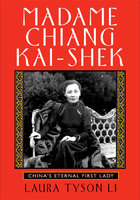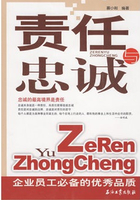When Roger Frock called to tell me he was writing a book about the early days of Federal Express, I felt that finally the right man had stepped forward to chronicle this dramatic bit of business history. From late 1973 to the spring of 1978, as head of the board of directors' executive committee, I participated in most aspects of the company's business during the startup. In those early years, Federal Express hovered on the verge of bankruptcy. Murphy's Law, "Anything that can go wrong will go wrong," certainly applied. Finally, a strong, growing, and profitable business emerged and we turned the corner. As one of my partners retrospectively exclaimed, it was like taking a supertanker at full speed over a reef with a quarter inch to spare!
There was a lot more at stake in the future of Federal Express than the fortunes of its management and shareholders. Federal Express was a major endeavor of a fledgling venture capital industry to create something new in a very public arena. Venture capital was a relatively unknown business at the time, and as far as the public knew, if a project succeeded, a few rich guys got richer; if there was failure, no one ever really heard about it. But with Federal Express, some venture capitalists were doing more than just writing checks. They were very publicly getting their hands dirty in a day-to-day survival operation. If matters had gone in the wrong direction, I am sure the venture capital business would be different than it is today.
Roger and the other people associated with the company worked full-time, essentially 24/7. I was a part-timer who flew in once a month, sometimes more frequently, to deal with financial issues and policy matters. I have never worked with a more dedicated group of people. All were intelligent, hardworking, able people with a high regard for one another. They were flexible, worked together as a unified team, quickly adapted to new challenges, and never got discouraged, no matter what kind of hot water the company was in.
In early 1973 I was an executive vice president of New Court Securities Corporation, a New York-based private investment affiliate of various Rothschild banking interests. My principal responsibilities were to manage the venture capital assets of the firm. At the time, we had about $75 million under our care, which made us one of the largest pools of venture capital in the United States. The investment climate was not good. Stocks had been in decline for several years, and many middle-market companies with good earnings and decent balance sheets were selling for six or seven times earnings. Moreover, inflation had reared its ugly head, interest rates were rising, and money was getting tight. There were no initial public offerings in sight, nor had there been for several years. For the time being, the day of the small venture deal with its long-time horizon to liquidity was over.
At New Court, we were obliged to modify our investment strategy to suit the changing capital markets. Typically, we would invest in small or startup companies and look toward living with them for a period of years while they realized their business plan. Sometimes we might step in financially when other sources of capital such as banks or other investors became unavailable. From what we could see in early 1973, there was going to be a financial drought for smaller enterprise for some period ahead. Consequently, we began to focus on those investment opportunities that could achieve financial critical mass fairly promptly. An investment opportunity that could reach $100 million in revenues and commensurate high margins and cash flow in a few years had a chance. It was our view that the IPO market would come back but new ventures would have to demonstrate something remarkable to attract the institutional investor.
One day George Montgomery of White, Weld & Company called to ask us to look over an intriguing situation they had uncovered in Memphis. He described a 28-year-old, ex-marine captain, a Vietnam veteran with a Silver Star, a Yale graduate, who had started with his own money a small-package airline with great potential.
Fred Smith turned out to be a very attractive person, highly articulate and obviously very intelligent. He had studied the small-package delivery business inside and out, and he had developed some very innovative ideas as to how to serve it. He also had a very competent management group working night and day to turn this operation into reality. In short, this was not a scheme on paper but one in three dimensions into which he had poured a good part of his net worth. Fred was about as entrepreneurial as they come.
In the early morning hours of April 20, 1973, a group of individuals-Fred Smith, Roger Frock, and I-stood watch outside the old World War II hangars at the Memphis airport for the first full run of the Federal Express Falcon 20 fleet. In due course, these aircraft came roaring out of the night sky. During the next several hours, they were unloaded and reloaded, and took off just before dawn. It was an impressive sight that reminded me of an old war movie, Twelve O'clock High.
Next morning we sat through a presentation presided over by Roger Frock. Needless to say, I was frazzled by travel time and lack of sleep. Roger, on the other hand, who had not made it to bed, was fresh, put together, and ready to go. He was the general manager and chief of operations, and I gathered he was no stranger to all-nighters. He was not a hip shooter; his convictions stemmed from hard study and a pragmatic turn of mind.
Back in New York, we began to focus on all the information and evidence we had to support a significant investment in Federal Express. First, we concluded the terms offered were inadequate to support the inherent risk and the level of support required to make the venture work. Second, the time limits to a decision were very tight-Federal Express had no time cushion before it had to exercise its options on the Falcon aircraft it had under contract.
Furthermore, we were not certain this new enterprise could generate a positive cash flow quickly enough to support the large capital investment and big debt structure that was contemplated. Most important, there was no operating record on which to hang one's hat, and no clear-cut evidence that the system could generate profits. Like all investment decisions, this one offered a great many positives but some profound negatives as well. Reluctantly, New Court decided not to participate. New Court took itself out of the running because we could not see ourselves solving all the problems we had uncovered. The time requirements to do all the studies or due diligence to support the figures and meet the fleet option deadlines were just too tight.
We later re-examined our thinking about Federal Express after another potential investor, General Dynamics, turned out a favorable report. Now we had General Dynamics' very comprehensive study to support our own thinking, as well as the potential participation of other serious investors who could help provide the resources needed to get this job done. We decided to join forces with White, Weld to assist it in getting this difficult financing completed. We also became the lead investor in the transaction. When I asked my partners who would represent us in this affair, they all turned toward me and smiled. It wasn't going to be easy.
Our faith and hard work began to pay off by 1975, as Federal's small-package business began to tax the capacity of its airplanes. Major cities in the Northeast along with Chicago, Los Angeles, and San Francisco were requiring two or more flights a day to meet growing demand. Suddenly, new vistas of what Federal Express could become opened up. There was the strong possibility that the company would become much larger and more profitable than any of us had thought possible, and we could finally look forward to a public offering.
The successful initial public offering of Federal Express in April of 1978 ended the long drought in new issues and was a bellwether of good things to follow. The tide had turned and a lot of other boats were to be lifted. Federal's shareholders were well rewarded, and for the next five years, the company grew at an astonishing rate both in sales and in earnings.
In the late eighties and early nineties the company faltered as it absorbed significant losses from ZapMail, the acquisition of Flying Tigers Airline, and its poorly conceived assault on the small-package market of Western Europe. The U.S. domestic package business absorbed all of these losses, however, and the company remained intact. Fred Smith and his management team had finally organized the template for a truly remarkable $30 billion company called FedEx.
This book chronicles the dramatic last-minute saves and turnarounds the company engineered from its inception to the present. It will introduce you to the remarkable individuals who gave Fred's initial concept wings and whose flexibility and creativity made a fledgling startup into one of the great success stories in modern business.
Charles Lewis Lea, Jr.
Director of Federal Express, 1973-1978















